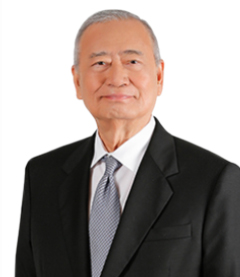IMPROVING Philippine agriculture, which includes fishery and forestry products, has been a persistent major issue since much of the 20th century. Unfortunately, we still continue to struggle to come to grips with it.
While agriculture is a small component of the Philippine economy, it is from where a greater proportion of our citizens make their living and where the poverty incidence is higher—34% for both farmers and fishermen in 2015 when the overall poverty incidence was 22%. It is therefore imperative that the government must devote an urgent and resolute attention to agriculture.
The problems in Philippine agriculture can all be summed up as a condition of low productivity. Agriculture economists use a measure in tracking productivity called Total Factor Productivity or TFP. This measure is derived by taking the growth rate of the agricultural sector output and deducting from it the growth rate of the related inputs.
The World Bank report attributes the Philippine slow growth to low rice yields and failure to shift to high value crops (HVC) despite the passage of the High Value Crops Development Act in 1995. The share of HVC in total agriculture output had just slightly increased from 19.6% in 2000 to 22.9% in 2019, a period of 20 years.
If I were the next president, I will devote close attention to transform our agriculture for the benefit of this sector's stakeholders which naturally translates to the well-being of the whole nation.
‘To help navigate the important issues and identify the proper solutions, I will add to the government structure a new body, the Council of Agricultural Advisers. It will not be an executive entity. The implementation of all decisions will be executed by the Secretary of Agriculture under my direct guidance, as it must be.
The first item that we will decide on is to remove the present concentration of attention and assistance on rice production and instead give the same treatments to all crops. This will mean that government assistance now given only to rice will also be given to all crops.
Moreover, we will change the present assistance to farmers from providing free inputs, which are considered expensive, to “decoupled payments” in cash computed based on farm area which is practiced in other countries, as pointed out in the World Bank report.
In this way, the farmer has free choice on what to plant and which is not necessarily rice. Irrigation will be provided to all crops and not only primarily to rice as is presently done. These changes are geared towards diversifying Philippine agriculture and increasing the production of HVCs. We will push much of the expected increased production of HVCs, and consequently processed foods, towards export.
We will increase irrigation infrastructure systematically and methodically and put the overall scheme into a long-term plan. Irrigation water has to be paid for to minimize wasteful use.
Similarly, we will develop a long-term plan for building farm-to-market roads all over the country by identifying their locations and establishing a construction time schedule. We will start building as the plan is being developed and put priority to rural areas that are beset by insurgency.
We will review the effectiveness of extension service and consider turning it towards a demand service rather than a supply service and also make use of private service providers, as suggested in the World Bank report.
In doing all the foregoing activities, we will make use of plans that may already have been developed. We will work collaboratively with the local government units (LGU) as they have better knowledge of the problem details. But more than this, under the local government decentralization law, the LGUs are responsible for the development of irrigation, farm-to-market roads, and extension service in their respective geographic areas and the funds to cover the expenditures for these development projects are included in their IRA.
Nevertheless, we will work out with them a joint funding arrangement. We will review the present status of land reform which reportedly is nearing completion. We will wind it down as soon as it is possible to do so, but we will continue to pursue all pending cases. At the proper time, I will declare that the social amelioration objective of land reform has now been fulfilled. It is a necessary step to take to enable us to pass a law to increase the size limit in owning land to a multiple of the present 5 hectares per individual. Land consolidation can then be done through sale.
There are other ways of consolidating land for farming. Lease and joint farming are the recognizable ones. In addition, there are novel practices that have been implemented in other countries as indicated in the World Bank report. We will undertake a campaign to encourage the farmers to consolidate their land for farming and provide them with information of the various ways of doing so, including novel ways that are suitable to Philippine conditions and culture.
Recognizing all these complexities, we will provide resoluteness of purpose and management effectiveness in putting the necessary changes in place and making those changes work for the benefit of all of our people.
As published in Mindanao Times, dated 09 August 2021




